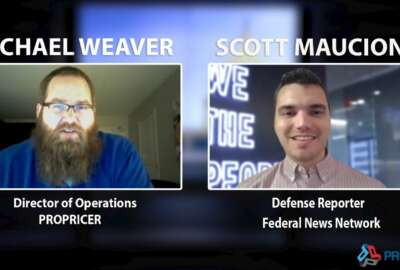
DoD’s Office of Strategic Capital open for business
The Office of Strategic Capital directs funding to projects traditional venture capital might overlook.
After a year in development, the Defense Department’s Office of Strategic Capital (OSC) announced its plans to move into business partnerships, and it’s starting with the Small Business Administration (SBA).
OSC and SBA’s first program aimed at generating capital for small business development launched as the Small Business Investment Company (SBIC) critical technologies initiative. OSC Director Jason Rathje announced the program last week at a Center for Strategic and International Studies seminar.
“That approach that we’re taking with the SBIC program is one where we’re trying to increase the investment to crowd-in private capital, create patient capital investment funds, prioritizing those areas that are investing into things that have large applications like semiconductors, but aren’t necessarily going directly to the things we buy,” Rathje said at the seminar.
DoD launched the office with the idea that partnering with private capital could help new technologies bridge the gap between development and actual production, the “valley of death.” Patient capital refers to investments that take some time to realize returns. Rathje said there has been a trend away from investing in what he called deep or critical technology areas in favor of products that are quicker and less risky to bring to market.
“In order to advance technologies to help the United States win this global competition, we need to find better ways to partner with private capital providers to increase capital flows to those areas that are otherwise less opportunistic than the top technology areas we see private capital flowing towards today,” Rathje said.
Looking to its continued expansion, Rathje said OSC will partner with other agencies to support the extension of loan or loan guarantees that invest in scaling critical technologies. Larger investments could also be made by combining DoD research, development testing and evaluation funds with private capital in larger investments for future procurement funding.
“These are the types of programs we’re looking to apply across DoD, we’re thinking deeply about what are the opportunities that we see in the out-year procurement budgets, like the one released by the President last week, and it’s exciting for us to find opportunities where we see a technology being developed into a capability where we think we can partner with private capital,” Rathje said.
In explaining the need to assist industry with investment for certain types of products, Rathje used the example of cubic boron arsenide. Massachusetts Institute of Technology developed the compound with funding from the Office of Naval Research. It has 10 times the thermal conductivity of silicon, and MIT researchers call it the best semiconductor material ever.
“Brand new compounds that might replace silicon don’t receive the amount of investment or focus that we’ve liked to see, to actually bring them to our military systems. And in those cases, we depend on private capital providers, we depend on new companies and startups to take these technologies that we’re investing in and create commercial products out of them,” Rathje said.
The Pentagon strategy for the OSC involves having it work in conjunction with organizations that are already involved in programs to support technology developers. OSC can scale investments between science and technology-focused organizations, such as the Defense Advanced Research Projects Agency, and commercially-oriented organizations, such as the Defense Innovation Unit, by increasing the capital available to critical technology companies in their production efforts.
“With each of these investments, our goal is to crowd-in private capital, not replace it, and to attract patient capital to bring critical technologies to scale,” Rathje said. “This concept of patient capital, these long duration investments in high capital intensive industries and hardware, deep tech is expensive, much more expensive than software.”
Copyright © 2025 Federal News Network. All rights reserved. This website is not intended for users located within the European Economic Area.
Alexandra Lohr, a former staff member, covered the Defense Department for Federal News Network until September 2023.
Related Stories





